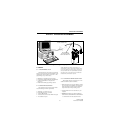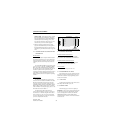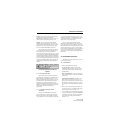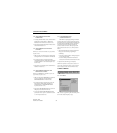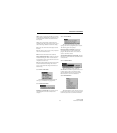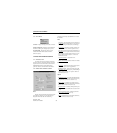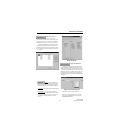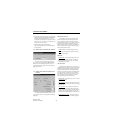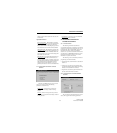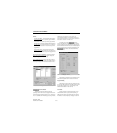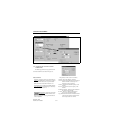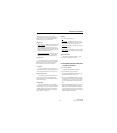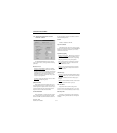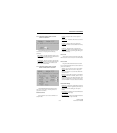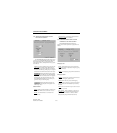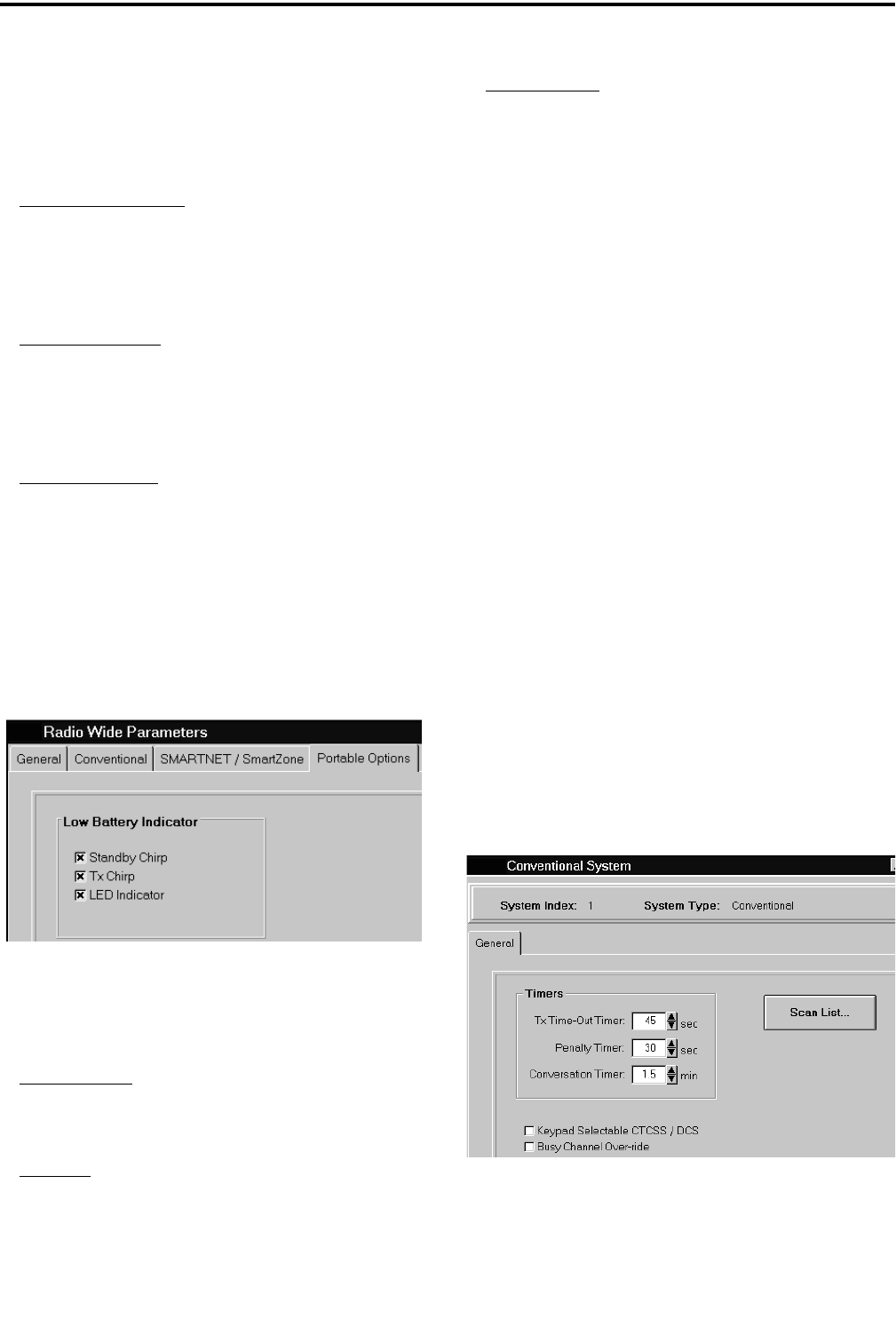
TRANSCEIVER PROGRAMMING
3-9
November 1999
Part No. 001-7780-500
after the control channel returns from the Voice On
Control mode.
Adjustable Parameters
Busy Override Delay
- With SmartZone operation,
this is the amount of time a user must press the PTT
switch to override a SmartZone busy that occurs
because some member of the talk group is present at
a site where there are no traffic channels available.
Affiliate Hold Off
- With SmartZone operation, this
is the delay time that occurs after acquiring the con-
trol channel before it sends an affiliation ISW. This
prevents all radios on the system from sending affil-
iation ISWs at the same time.
Failsoft Inactivity
- Programs failsoft operation (see
Section 2.5.11). If the radio remains inactive (no
receive or transmit activity on channel) while operat-
ing in the failsoft mode for the programmed time, the
radio momentarily leaves the failsoft mode and
attempts to find a control channel. If “0” is pro-
grammed, the radio does not leave the failsoft mode.
3.4.5 RADIO-WIDE PORTABLE OPTIONS
SCREEN
The radio-wide Mobile Options screen is shown
above, and is used to program the following
parameters (see Section 2.3.6):
Standby Chirp
- Selects if a beep sounds every
minute while a low battery condition is being
detected.
Tx Chirp
- Selects if a beep sounds every time the
PTT switch is pressed while a low battery condition
is being detected.
LED Indicator
- Selects if the top panel BAT LED
indicates a low battery condition.
3.5 PROGRAMMING CONVENTIONAL
SYSTEMS AND CHANNELS
3.5.1 INTRODUCTION
The following information describes how
conventional channels are programmed. Conventional
systems do not need to be set up because only one can
be programmed, and it is automatically set up when
the programming file is selected as described in
Section 3.1.6. Up to 256 conventional channels can be
programmed (if no SMARTNET/SmartZone systems
are programmed). Refer to Section 1.2.4 for more
information on systems and channels.
The following is the recommended procedure for
programming conventional channels:
1. Program the radio-wide information as described in
Section 3.4.
2. If other types of systems are programmed, make
sure the conventional system is selected by selecting
Window > Conventional in the menu bar.
3. Program the conventional system information and
then the channel information as follows.
3.5.2 CONVENTIONAL SYSTEM GENERAL
SCREEN
The conventional system General screen is shown
above, and it programs the following parameters:



